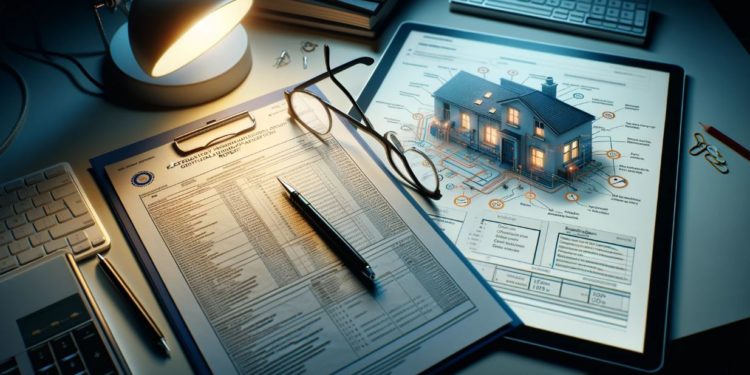In the labyrinth of property management and ownership, ensuring the safety and compliance of electrical installations is paramount. The Electrical Installation Condition Report (EICR) emerges as a beacon of safety, providing a detailed examination of a property’s electrical systems. Also known to many as the Landlord Safety Test, Electrical Safety Certificate, or the Homebuyer’s Test, the EICR Report is more than just a document—it’s a vital process that ensures your property’s electrics meet the required safety standards.
What is an EICR?
An EICR is an official document generated following an in-depth inspection of the electrical installations in any residential or commercial property. This report identifies any deficiencies against the national safety standard for electrical installations, offering peace of mind for property owners, landlords, and tenants alike. It’s a critical tool for preventing electrical hazards, ensuring that all electrical installations are safe and up to date.
The Importance of Regular Electrical Checks
Electrical installations can deteriorate over time due to wear and tear, environmental factors, and usage patterns. Regular checks are essential to identify and rectify potential hazards like faulty wiring, overloaded circuits, or outdated electrical components that could lead to electric shocks, fires, or other dangerous situations.
For Homeowners: A 10-Year Safety Net
For homeowners, the recommendation is to have an EICR conducted every 10 years. This frequency ensures that any changes to the electrical system, whether through renovations, upgrades, or the natural aging process, are assessed and addressed to maintain safety and compliance.
For Landlords: A 5-Year Requirement
Landlords have a legal and moral responsibility to ensure the safety of their tenants. As such, properties being rented out require an EICR every five years. This requirement is not only a best practice but often a legal mandate to help protect tenants from potential electrical risks.
Commercial Properties: Special Considerations
Commercial properties, with their complex electrical systems and high usage demands, may require more frequent EICRs. Depending on the specific circumstances and the findings of the most recent EICR, a sooner re-inspection might be necessary to address any issues promptly and maintain a safe working environment.
Understanding the EICR Process
The process of obtaining an EICR involves a series of inspections and tests conducted by Nationwide Surveyors, a qualified electrician or electrical inspector. This comprehensive evaluation covers all aspects of a property’s electrical installation, including wiring, sockets, light fittings, and the consumer unit. The goal is to identify any wear and tear, damage, or modifications that deviate from the safety standards.
Decoding the EICR: What the Findings Mean
An EICR categorises findings into different codes, each indicating the severity of the issue found:
- Code C1: Indicates a danger present that is likely to cause injury and requires immediate action.
- Code C2: Points to a potential danger that needs urgent remediation.
- Code C3: Suggests improvements that, while not immediately dangerous, would enhance the safety of the electrical installation.
- FI: Stands for further investigation without delay.
The Impact of an EICR on Property Value and Insurance
An up-to-date EICR can significantly affect a property’s market value and attractiveness to potential buyers or tenants. It demonstrates a commitment to safety and compliance, potentially reducing insurance premiums and liability risks. For commercial properties, it also underscores a business’s commitment to employee safety and regulatory compliance.
Navigating the Aftermath: Post-EICR Actions
Following an EICR, property owners might need to undertake remedial actions to address the issues identified. This could range from simple fixes to comprehensive rewiring projects, depending on the severity of the findings. Prioritising these repairs is crucial for ensuring the safety of the property and its occupants.
Choosing the Right Professional for Your EICR
Selecting a qualified and experienced professional to conduct your EICR is critical. Only certified electricians with the requisite knowledge and expertise should carry out this inspection, ensuring the accuracy and reliability of the report.
EICR Myths Debunked
Despite its importance, misconceptions about the EICR process abound. Some believe it to be unnecessarily costly or only relevant for older properties. However, electrical safety is a universal concern, and the cost of an EICR pales in comparison to the potential costs associated with electrical fires or accidents.
Conclusion: Safeguarding Your Property with EICR
The EICR stands as a crucial element in the safety and maintenance regimen of any property, ensuring that electrical installations do not pose a threat to occupants or visitors. Whether you’re a homeowner, landlord, or commercial property manager, staying informed and proactive about electrical safety is non-negotiable. Regular EICR inspections are not just a compliance requirement but a fundamental practice in maintaining a safe, efficient, and compliant property. Remember, the safety provided by an up-to-date EICR extends beyond mere regulatory compliance—it’s a proactive measure to protect lives, prevent property damage, and ensure peace of mind for all stakeholders.











































































